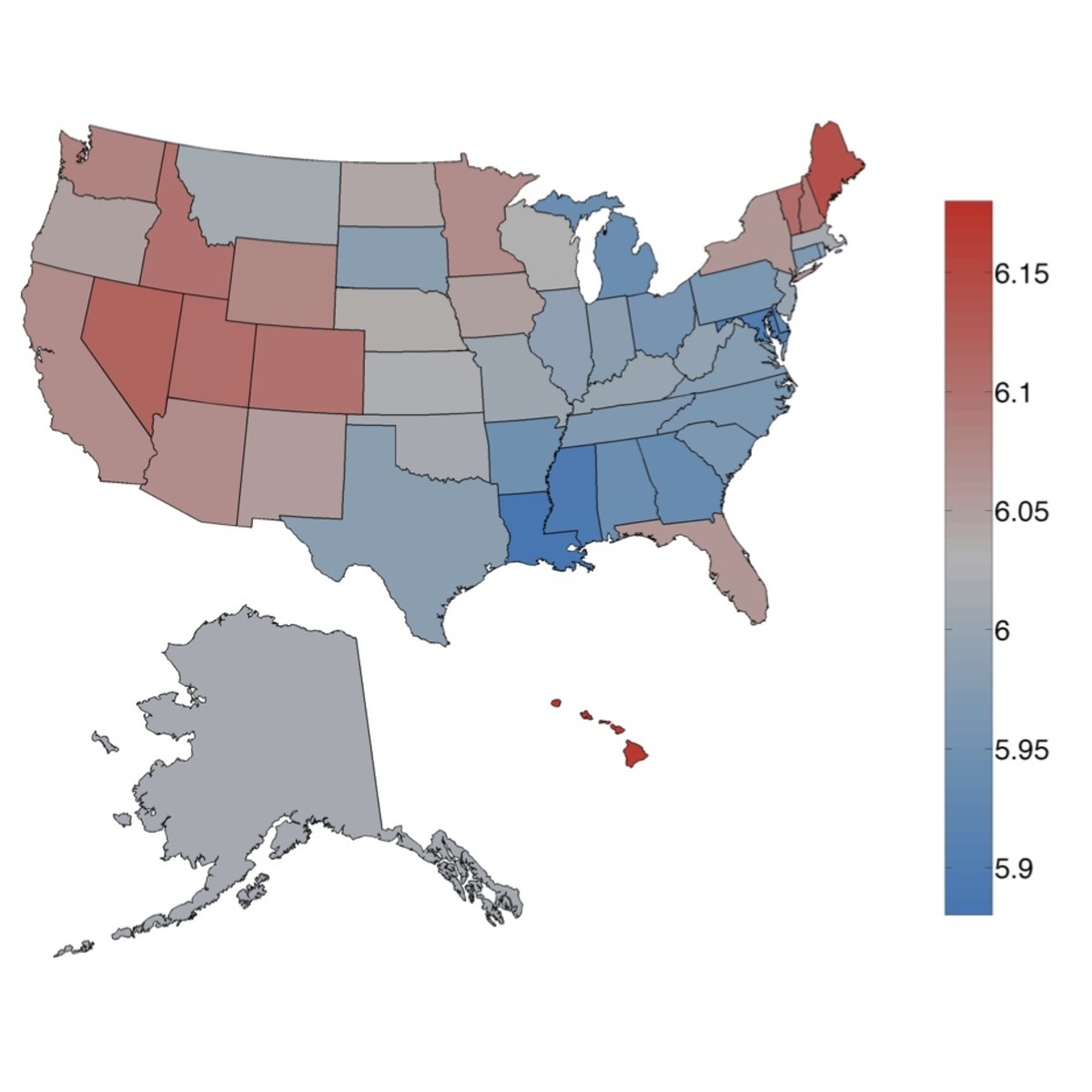The geography of happiness: Connecting Twitter sentiment and expression, demographics, and objective characteristics of place
L. Mitchell, K. D. Harris, M. R. Frank, P. S. Dodds, and C. M. Danforth
PLoS ONE, 8, e64417, 2013

Times cited: 658
Abstract:
We conduct a detailed investigation of correlations between real-time expressions of individuals made across the United States and a wide range of emotional, geographic, demographic, and health characteristics. We do so by combining (1) a massive, geo-tagged data set comprising over 80 million words generated over the course of several recent years on the social network service Twitter and (2) annually-surveyed characteristics of all 50 states and close to 400 urban populations. Among many results, we generate taxonomies of states and cities based on their similarities in word use; estimate the happiness levels of states and cities; correlate highly-resolved demographic characteristics with happiness levels; and connect word choice and message length with urban characteristics such as education levels and obesity rates. Our results show how social media may potentially be used to estimate real-time levels and changes in population-level measures such as obesity rates.
- This is the default HTML.
- You can replace it with your own.
- Include your own code without the HTML, Head, or Body tags.
BibTeX:
@article{mitchell2013a,
author = {Mitchell, L. and Frank, M. R. and Harris, K. D. and Dodds, P. S. and Danforth, C. M.},
title = {The Geography of Happiness: {C}onnecting {T}witter sentiment and expression, demographics, and objective characteristics of place},
journal = {PLoS ONE},
year = {2013},
key = {happiness,geography},
volume = {8},
pages = {e64417},
}